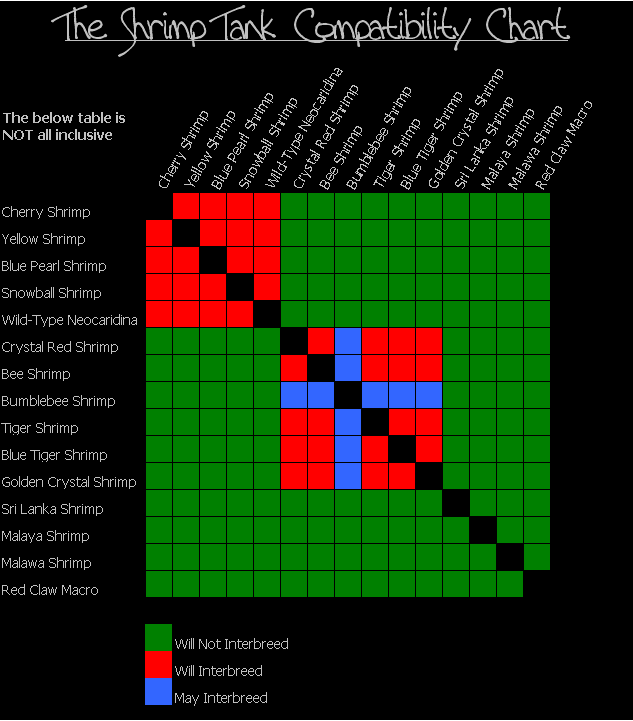Caridina Shrimp Cross Breeding
The world of aquariums is a mesmerizing one. From colorful fish to exotic plant species, there are endless options for creating a unique and visually stunning underwater world. However, for those who want to take it a step further, the world of shrimp breeding offers a challenging yet incredibly rewarding experience. One type of shrimp that is particularly fascinating to breed is Caridina shrimp, and crossbreeding can unlock a whole new world of possibilities.
The Pain Points of Caridina Shrimp Cross Breeding
Breeding Caridina shrimp can be a tricky process as these shrimp require specific water parameters, diet, and habitat to thrive. Crossbreeding adds another layer of complexity as it involves breeding two different species of Caridina shrimp, which can be challenging to achieve due to differences in genetics and behaviors. Additionally, there is a risk of producing weak or sterile offspring if the breeding process is not done correctly.
The Target of Caridina Shrimp Cross Breeding
Caridina shrimp cross breeding aims to create unique and visually stunning shrimp specimens that exhibit a combination of desirable traits from their parent species. These traits can include coloration, pattern, size, and behavior. Crossbreeding can also improve the genetic diversity of the shrimp population, which can help increase their resilience to disease and other environmental stressors.
Summary of Main Points
In summary, Caridina shrimp cross breeding can be a challenging yet rewarding experience that aims to create unique specimens with desirable traits from their parent species. However, it requires careful consideration of water parameters, diet, and habitat to ensure successful breeding. Proper crossbreeding techniques can improve genetic diversity and the resilience of the shrimp population.
My Personal Experience with Caridina Shrimp Cross Breeding
I have been breeding Caridina shrimp for several years now, and crossbreeding has always intrigued me. My most successful crossbreeding experiment was between Caridina cantonensis and Caridina mariae, resulting in a beautiful blue and white speckled shrimp that has become a unique addition to my aquarium. However, it was not an easy process, and I had to carefully monitor water parameters, diet, and habitat to ensure successful breeding.

Common Mistakes to Avoid in Caridina Shrimp Cross Breeding
One common mistake that many shrimp breeders make is breeding too many shrimp at once. This can lead to a stressful environment for the shrimp, which can impede successful breeding. Another mistake is not providing enough hiding places for the shrimp, which can cause stress and lead to fights between shrimp.

The Importance of Research in Caridina Shrimp Cross Breeding
Research is critical in Caridina shrimp cross breeding as different species have different behaviors, water parameter needs, and diets. Understanding these differences can increase the likelihood of successful crossbreeding and produce healthy offspring that exhibit desirable traits from both parent species.

The Role of Patience in Caridina Shrimp Cross Breeding
Patience is essential in Caridina shrimp cross breeding as it can take several months for shrimp to reach breeding age, and successful crossbreeding can take several attempts. Rushing the breeding process can result in weak or sterile offspring, resulting in a wasted effort.
Questions and Answers
Q: What are some of the most popular Caridina shrimp species for crossbreeding?
A: Some of the most popular Caridina shrimp species for crossbreeding include Caridina cantonensis, Caridina mariae, and Caridina serrata.
Q: How can I improve my chances of successful crossbreeding?
A: Ensuring water parameters, diet, and habitat are all carefully considered and adequately maintained is critical for successful crossbreeding. Researching the species' behavior can also help maximize the likelihood of successful crossbreeding.
Q: Is it essential to separate different species of Caridina shrimp during crossbreeding?
A: Yes, it is essential to separate different species of Caridina shrimp during crossbreeding to prevent hybridization between different species and preserve the genetic integrity of each population.
Q: Can crossbreeding harm the shrimp population?
A: If crossbreeding is done correctly, it can improve the genetic diversity of the shrimp population. However, if done improperly, it can result in weak or sterile offspring and harm the population.
Conclusion of Caridina Shrimp Cross Breeding
Caridina shrimp cross breeding offers a challenging and rewarding experience for shrimp breeders, allowing for the creation of unique specimens with desirable traits from their parent species. However, it requires careful consideration of water parameters, diet, and habitat to ensure successful breeding. Patience, research, and attention to detail are key to achieving successful crossbreeding and producing healthy offspring that add a unique touch to any aquarium.
Gallery
Let's Face It, The Shrimp Hobby Can Be Overwhelming When You Are Trying

Photo Credit by: bing.com / aquarium
Shrimp Family Tree Project (pt. 1 - Caridina Cantonensis) - Page 2

Photo Credit by: bing.com / caridina breeding tank cantonensis aquarium grading
Shrimp Compatibility Chart

Photo Credit by: bing.com / chart compatibility shrimp caridina cross breeding water breed genetics gif hardness found
Breeding Neocaridina Shrimp - Breeding Mania

Photo Credit by: bing.com / shrimp breeding stages neocaridina freshwater prawn snail shrimps juvenile aquariumbreeder hatching rcs davidi species shrimptank
Crossbreeding Caridina Shrimp - YouTube

Photo Credit by: bing.com /